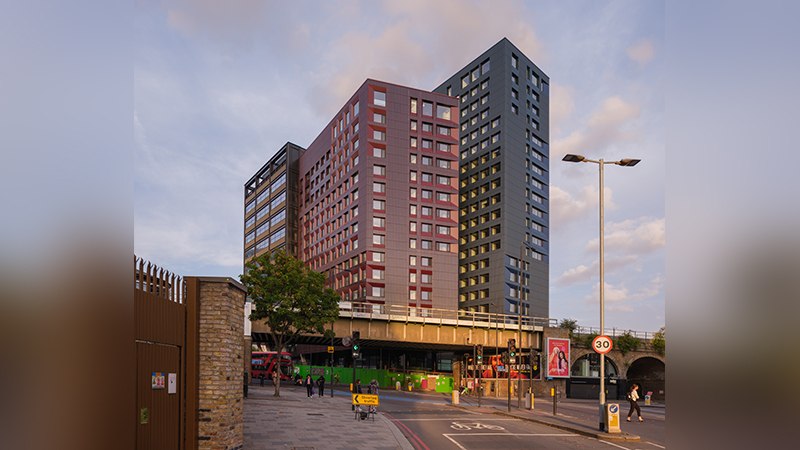The government’s net zero strategy may be subtitled “Build Back Greener”, but its 368 pages give little detail as to the changes required to our English planning system and to local policy making and decision taking. The most direct reference to planning in the whole strategy is on page 267:
“National planning policies already recognise the importance of sustainable development and make clear that reducing carbon emissions should be considered in planning and decision making. The National Model Design Code provides tools and guidance for local planning authorities to help ensure developments respond to the impacts of climate change, are energy efficient, embed circular economy principles, and reduce carbon emissions. The government is considering how the planning system can further support our commitment to reaching net zero. We will make sure that the reformed planning system supports our efforts to combat climate change and help bring greenhouse gas emissions to net zero by 2050. For example, as part of our programme of planning reform we intend to review the National Planning Policy Framework to make sure it contributes to climate change mitigation and adaptation as fully as possible.”
This is not news. The government flagged this intention in September. Indeed, when the latest revision to the NPPF was published in July 2021, the National Audit Office recommended that there be a “clear pathway for how government expects to further align the planning system with net zero in the forthcoming planning reforms”.
Questions abound
How much more prescriptive will the revised NPPF be than the current version, which already advises that local plans should “mitigate climate change (including by making effective use of land in urban areas) and adapt to its effects” and that new development should be planned for in ways that “avoid increased vulnerability to the range of impacts arising from climate change” and that “can help to reduce greenhouse gas emissions”?
When will we see the revisions? Will they be consulted on? Will they now be delayed by the government’s wider re-think as to the future of our planning system?
Any revised guidance should be clear as to what measures are to be delivered through the planning system, with authorities able or required to impose requirements by way of conditions or planning obligations, and what measures should be left to be delivered by other mechanisms, whether just the market or other regulatory mechanisms such as the Building Regulations (as will be the case with the Future Homes Standard). Duplication of controls, as well as authorities choosing to adopt their own different or more stringent requirements, is a systemic problem.
Will the opportunity be taken to build sustainability retrofit requirements into certain permitted development rights as a condition of prior approval?
Will the revised document advise what the strategy means for the spatial choices and relative priorities to be given to, for instance, differing demands on the use of land (for instance for growing energy crops as against allowing for afforestation); refurbishment versus demolition and re-build given embedded energy considerations (but a new building may be more efficient – where is the dividing line?); the use of green belt where sustainable expansion of a town or city may be the most energy efficient option; historic building conservation as against interventions to achieve greater energy efficiency, or the importance of securing even locally unpopular renewable energy projects? Because these are just some examples of where detailed guidance, rather than the incantation of high-level principles, would genuinely assist.
The plot thickens
The strategy has much more to say about the proposals within the Environment Bill, including the five core environmental principles to be embedded in government decision making and a system for local nature recovery strategies to be in place across England. Next year the government will also launch a national framework of green infrastructure standards. Planning and environment are increasingly intertwined, which should be properly reflected in the next version of the NPPF.
The government also seeks to tie in its proposals to its “levelling up” agenda, so as to “help places reduce their carbon impacts” and more is promised in the Levelling Up White Paper later this year. Transport decarbonisation principles will be embedded in spatial planning and across transport plan making.
Of course, we have a bifurcated planning system, with “nationally significant infrastructure projects” delivered by nationally determined development consent orders, in accordance with principles set out in a series of national policy statements covering differing infrastructure types, rather than by the NPPF and councils’ local development plans. In September, the government announced a consultation on updated draft revisions to five of its six energy NPSs to “support the infrastructure required for the transition to net zero”. The government has also announced that, as part of its Project Speed initiative, it will be looking at streamlining NSIP processes.
No time to waste
Delivery speed for the new energy projects on which the strategy relies is vital. For instance, four carbon capture usage and storage clusters are to be delivered by 2030. There is much reliance on dedicated hydrogen infrastructure. Our electricity networks also require massive reinforcement. How might NSIP processes be streamlined while still allowing for a fair process? What long promised but unexplained reforms to environmental impact assessment and strategic environmental assessment processes might assist?
Whatever happens to the planning system, the programme set out in the document, and land use demands arising, will be central to our lives and work over the years to come.
Simon Ricketts is a partner at Town Legal LLP











